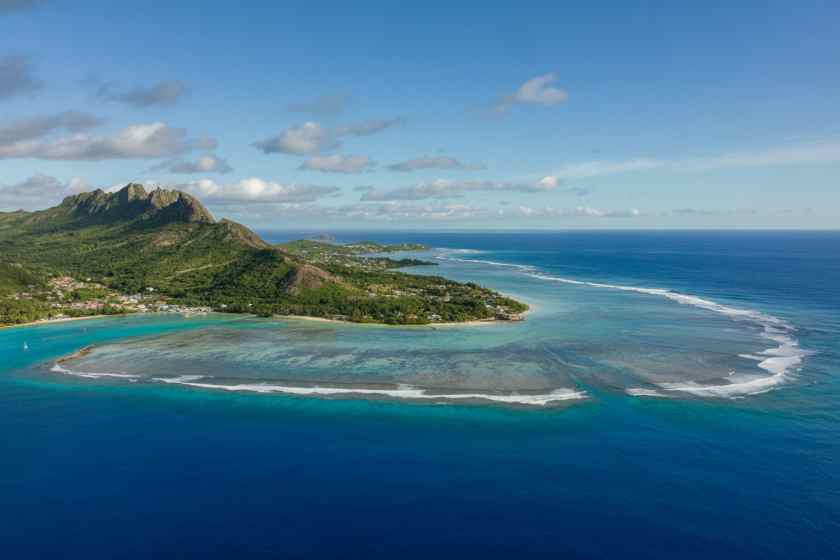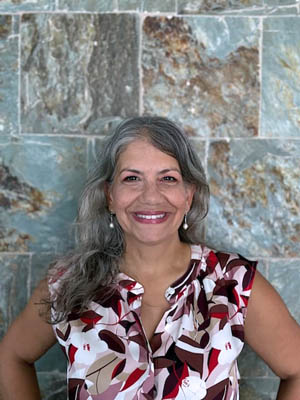Cheval Blanc Seychelles: A New Standard in Luxury and Sustainable Tourism – Travel And Tour World

Report on the Launch of Cheval Blanc Seychelles and its Alignment with Sustainable Development Goals
Published: October 26, 2025
The inauguration of the Cheval Blanc resort in Seychelles marks a significant development in the nation’s luxury tourism sector. This report analyzes the launch’s implications, with a specific focus on its contribution to the United Nations Sustainable Development Goals (SDGs).
Economic Advancement and Sustainable Growth (SDG 8)
The establishment of Cheval Blanc Seychelles is poised to make a substantial contribution to SDG 8: Decent Work and Economic Growth. The resort’s presence is expected to stimulate the local economy through several key mechanisms.
Key Economic Contributions:
- Job Creation: The resort will generate direct and indirect employment opportunities for the local population, fostering skills development within the high-end hospitality sector.
- Increased Foreign Investment: As a venture by the LVMH group, this project signals confidence in the Seychelles market, potentially attracting further international investment.
- Local Economic Linkages: The influx of high-spending tourists will create a positive ripple effect, benefiting local suppliers, artisans, and service providers, thereby promoting inclusive growth.
Commitment to Environmental Stewardship (SDG 14 & SDG 15)
Seychelles’ reputation as a leader in sustainable tourism is reinforced by the operational ethos of luxury resorts like Cheval Blanc, which integrate environmental protection into their core offerings. This approach directly supports SDG 14 (Life Below Water) and SDG 15 (Life on Land).
Conservation and Ecotourism Initiatives:
- Marine Conservation (SDG 14): The resort offers curated guest activities such as snorkeling, scuba diving, and private yacht excursions. These are designed to promote awareness and appreciation for marine biodiversity while adhering to practices that preserve the pristine aquatic ecosystems of the Indian Ocean.
- Terrestrial Protection (SDG 15): Guests are encouraged to engage with the local environment through guided visits to protected areas, including the UNESCO World Heritage Vallee de Mai Nature Reserve. This model of tourism provides financial support for the conservation of unique terrestrial ecosystems and endemic species.
- Eco-Friendly Operations: The resort’s commitment to eco-friendly practices is fundamental to minimizing its environmental footprint and preserving the natural beauty that is central to its appeal.
Fostering Sustainable Communities and Cultural Preservation (SDG 11)
The Cheval Blanc Seychelles model emphasizes authentic cultural immersion, contributing to SDG 11 (Sustainable Cities and Communities), particularly Target 11.4, which aims to protect and safeguard the world’s cultural and natural heritage.
Cultural and Community Engagement:
- Support for Local Culture: The resort facilitates excursions to local markets and provides platforms for guests to learn about and engage with the local Creole culture, ensuring that tourism benefits are shared with the community.
- Preservation of Heritage: By integrating cultural experiences into its luxury offerings, the resort helps create economic value for cultural preservation, ensuring that local traditions are sustained for future generations.
Conclusion: A Paradigm for Sustainable Luxury Tourism
The opening of Cheval Blanc Seychelles represents more than an expansion of the nation’s luxury hospitality portfolio. It serves as a strategic advancement of Seychelles’ identity as a destination that successfully harmonizes high-end tourism with a profound commitment to the Sustainable Development Goals. By championing responsible and ethical tourism, this development reinforces Seychelles’ position as a global leader in sustainable practices, attracting a clientele that values both luxury and environmental and social responsibility.
Analysis of Sustainable Development Goals in the Article
-
Which SDGs are addressed or connected to the issues highlighted in the article?
The article on luxury tourism in Seychelles connects to several Sustainable Development Goals (SDGs) by highlighting the intersection of economic growth, environmental preservation, and sustainable practices within the tourism sector. The following SDGs are addressed:
- SDG 8: Decent Work and Economic Growth: The article emphasizes how the new luxury resort is expected to boost the local economy and create employment.
- SDG 12: Responsible Consumption and Production: The text explicitly mentions Seychelles as a “sustainability tourism model” and highlights the trend of luxury tourism focusing on environmental sustainability.
- SDG 14: Life Below Water: As an island nation, Seychelles’ tourism is intrinsically linked to its marine environment. The article mentions activities like snorkeling and scuba diving and the preservation of “crystal-clear waters” and “local ecosystems.”
- SDG 15: Life on Land: The article discusses the preservation of Seychelles’ “natural splendour,” its “wildlife reserves,” and the promotion of excursions to the “UNESCO World Heritage Vallee de Mai Nature Reserve.”
-
What specific targets under those SDGs can be identified based on the article’s content?
Based on the article’s focus, specific targets within the identified SDGs can be pinpointed:
SDG 8: Decent Work and Economic Growth
- Target 8.9: “By 2030, devise and implement policies to promote sustainable tourism that creates jobs and promotes local culture and products.” The article directly supports this by describing how the resort will enhance the local economy, create “job opportunities for the local population,” and offer excursions where guests can “learn about local Creole culture.”
SDG 12: Responsible Consumption and Production
- Target 12.b: “Develop and implement tools to monitor sustainable development impacts for sustainable tourism…” The article points to this target by stating, “Seychelles is a sustainability tourism model with particular resorts employing thorough eco-friendly practices that preserve nature for generations to come.” This implies a system of monitoring and implementing sustainable practices.
SDG 14: Life Below Water
- Target 14.7: “By 2030, increase the economic benefits to Small Island Developing States (SIDS)… from the sustainable use of marine resources, including through… tourism.” Seychelles is a Small Island Developing State. The article’s entire premise is about increasing economic benefits through high-end, sustainable tourism, which relies on the appeal of its marine and coastal environment.
SDG 15: Life on Land
- Target 15.1: “By 2020, ensure the conservation, restoration and sustainable use of terrestrial and inland freshwater ecosystems and their services…” The article aligns with this by mentioning the importance of preserving the islands’ “natural beauty” and promoting visits to protected areas like “famous wildlife reserves” and the “UNESCO World Heritage Vallee de Mai Nature Reserve.”
-
Are there any indicators mentioned or implied in the article that can be used to measure progress towards the identified targets?
The article implies several indicators that could be used to measure progress towards the identified targets:
SDG 8: Decent Work and Economic Growth
- Implied Indicator for Target 8.9: The article suggests measuring the economic impact through the “influx of international tourists” who “spend substantial amounts, thereby enhancing the local economy.” This relates to Indicator 8.9.1 (Tourism direct GDP as a proportion of total GDP). It also directly mentions the creation of “job opportunities for the local population,” which relates to Indicator 8.9.2 (Number of jobs in tourism industries).
SDG 12: Responsible Consumption and Production
- Implied Indicator for Target 12.b: The statement that “particular resorts employing thorough eco-friendly practices” implies the existence of sustainable tourism plans. This can be linked to Indicator 12.b.1 (Number of sustainable tourism strategies or policies and implemented action plans).
SDG 14: Life Below Water
- Implied Indicator for Target 14.7: The focus on luxury tourism enhancing the country’s economy points to the measurement of tourism’s financial contribution. This aligns with the principle of Indicator 14.7.1, which measures the proportion of GDP from sustainable marine-related activities, with tourism being a key component for Seychelles. An implied indicator is the “Contribution of sustainable tourism to the GDP of Seychelles.”
SDG 15: Life on Land
- Implied Indicator for Target 15.1: The mention of specific protected areas like the “UNESCO World Heritage Vallee de Mai Nature Reserve” and “famous wildlife reserves” implies the importance of these sites for biodiversity. This connects to Indicator 15.1.2 (Proportion of important sites for terrestrial biodiversity that are covered by protected areas).
-
Create a table with three columns titled ‘SDGs, Targets and Indicators” to present the findings from analyzing the article.
SDGs Targets Indicators (Implied from the article) SDG 8: Decent Work and Economic Growth 8.9: Promote sustainable tourism that creates jobs and promotes local culture. - Growth in tourism’s contribution to the local economy.
- Number of new job opportunities created for the local population.
SDG 12: Responsible Consumption and Production 12.b: Develop and implement tools to monitor sustainable development impacts for sustainable tourism. - Implementation of “thorough eco-friendly practices” by resorts.
SDG 14: Life Below Water 14.7: Increase the economic benefits to Small Island Developing States (SIDS) from the sustainable use of marine resources, including tourism. - Increase in economic revenue from sustainable luxury tourism linked to marine and coastal attractions.
SDG 15: Life on Land 15.1: Ensure the conservation and sustainable use of terrestrial ecosystems. - Promotion and preservation of protected areas like the “UNESCO World Heritage Vallee de Mai Nature Reserve” and “wildlife reserves.”
Source: travelandtourworld.com
What is Your Reaction?
 Like
0
Like
0
 Dislike
0
Dislike
0
 Love
0
Love
0
 Funny
0
Funny
0
 Angry
0
Angry
0
 Sad
0
Sad
0
 Wow
0
Wow
0


















































.jpg.webp?itok=0ZsAnae9#)



/environment-climate-change-and-health-(ech)/water-sanitation-hygiene-and-health-(wsh)/landfill-tuvalu-36092.tmb-1200v.jpg?sfvrsn=5c21fe40_1#)



















